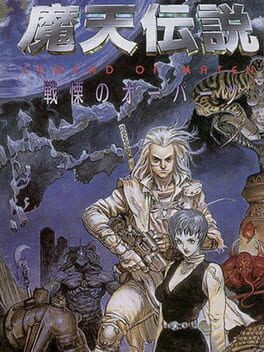Maten Densetsu: Senritsu no Ooparts is a role-playing video game for the Super Famicom. The game takes place in a floating post-apocalyptic Japan. The player emerges in the middle of Tokyo's Akihabara district where the buildings have turned into ruins. Countless demons have managed to destroy cities everywhere and the people are all hiding underground. Getting home to the Shinjuku district will allow the player to uncover more of the plot. Mysterious artificats called ooparts (out-of-place artifacts) help to play a role in this invasion by a mysterious civilization. Players must choose between five characters; each one having different strengths and limitations. The game is played from the first-person perspective and the battles are extremely random. The dungeons in the game are claustrophobic and should remind some games of Shin Megami Tensei. Players do not gain levels after earning so many experience points. Instead, they gain energy points to boost their statistics.
Reviews View More
This review contains spoilers
- Getting this out of the way immediately; dungeons are way too big. We're talking sizes that rival the final dungeons in any regular dungeon-crawler. Even indoor towns happen to be absurdly massive and are a slog to get through. The encounter rate is thankfully pretty low and escaping has a high chance of success. This can still be a huge deal-breaker for some.
- The gameplay itself is unique and has some interesting benefits to it but not without its flaws. You don't have leveling up or any traditional item stores but instead "energy" which you get from killing enemies. You use energy to level up your protagonist and heroine's stats, upgrade your weapons and produce all your items and resources whenever you want. Scavenging for items was more rewarding since they were more rare. Developing your characters in a more free-form fashion was also fun to do, although is nowhere near as extensive as in other JRPGs at the time. The balancing is surprisingly good, or as good as it can be, at least until the last third of the game where your characters become so overpowered and at so little cost that there's no longer any real challenge to be had.
- The narrative itself isn't much to write home about, but the individual set pieces and the world building that wraps it all around is all fantastic stuff. There's a decent amount of one-on-one conversations with ordinary people doing their best to stay alive in a demonic apocalypse. You end up travelling to different regions in Japan in different periods and all of them are very distinctive and memorable. Some of the more stand out moments include going to Kyoto to stop a demon parade (with appropriately themed enemies) by travelling across the city to beat up and take the limbs of some dismembered monster for shits and giggles. You also end up in Kyuushuu to find dinosaur people hanging out in a village who have a serious Dinosaur Death Cult Problem™. It reminded me a lot of Megami Tensei 2 specifically but maybe slightly more eccentric in places.
- Really, the entire middle-portion of the game is a fun time and is easily the highlight of the experience. Its one hell of a wild ride and I can't appreciate the insanity enough.
- Most of the music is just there to fill the atmosphere. Some tracks are obnoxious and most are re-used and looped way too often. Some select tracks are great and wonderfully complement the tone of the game, but these are probably like 3 or 4 total.
- The creature and character designs are all phenomenal and ooze with personality. The game uses a mix of pixel art, scanned illustrations and handcrafted sculptures for the wide variety of characters you encounter in the game. They're all fantastic and distinct and seeing what next creature I'd be fighting ended up being a huge draw for me in the game. I didn't actually know this going in, but both Katsuya Terada and Yasuhi Nirasawa worked on the designs. Nirasawa himself greatly contributed to a bunch of tokusatsu shows, video games and ironically SMT itself, later on. He's severely underappreciated as an artist.
-The closing dungeons of the game were an absolute chore, enemies can't hurt you in any significant way but by having large health pools they increase the sheer slog of going through the already massive dungeons.
-The final boss had a unique gimmick to it I haven't seen in a traditional JRPG before, but the ending itself is slightly underwhelming. For all the foreshadowing with the Ooparts and a certain disembodied head, I felt a bit underwhelmed.
Its a neat game that I wish was just a bit more polished.
